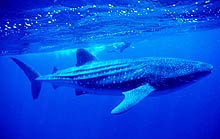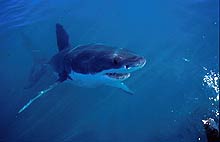At the other end of the feeding scale are the great white shark (Carcharadon carcharias) and the broadnose sevengill shark (Notorynchus cepedianus ) that feed on a range of invertebrates and vertebrates, including a high number of marine mammals.
Sharks that live on or near the seafloor generally have mouths underneath the body with many small teeth. Wobbegongs live on the seafloor and are ambush predators that use their wide jaws and sharp teeth to grab unsuspecting passing prey.
Examining the stomach contents of sharks is the best way to understand the diets of sharks and their possible role in their environment. Studies have clearly shown that there is a change in the diet of some sharks as they grow larger and are able to take larger or harder-bodied prey, such as crabs.
A difficulty with studying shark diets like this is that the same species of sharks may have different diets depending on their location. Some sharks may be particular about what they eat and search for specific prey types, but other sharks may be opportunistic, feeding on whatever they find. Scientists are only now starting to understand the flexibility of shark diets.
|

Whale sharks (Rhincodon typus) are filter feeders.
They swim with mouth agape filtering food from
the water as it passes over the gills.
(© Ken Hoppen, oceannotions@primus.com.au)

Many of the pelagic species, such as the
whaler sharks (Family Carcharhinidae)
are fast swimmers with ventrally placed
mouths and relatively large teeth
(© Andrea Marshall).
|
